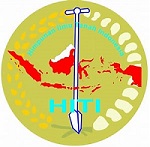KAJIAN NITROGEN, FOSFOR, KALIUM DAN C-ORGANIK PADA TANAH BERPASIR PERTANAMAN KELAPA DESA RANOKETANG ATAS
DOI:
https://doi.org/10.35791/se.21.3.2021.36670Keywords:
nutrients, unsur hara, sandy soils, tanah berpasir, coconut plant, tanaman kelapa, flat and sloped areas, areal datar dan berlereng.Abstract
STUDY OF NITROGEN, PHOSPHORUS, KALIUM, AND C-ORGANIC IN SANDY SOILS OF COCONUT PLANTATION OF RANOKETANG ATAS VILLAGE
This study aims to determine the nutrient contents of Nitrogen, Phosphorus, Kalium and C-organic in the sandy soils of coconut plantations. Research was conducted in the village of Ranoketang Atas for soil sampling and for soil analysis at Laboratory of Chemistry and Soil Fertility, Department of Soil, Faculty of Agriculture, Sam Ratulangi University, Manado. This study used Survey Methods and Laboratory Analysis. Soil was taken at six points planted with coconut, consisted of three points on sloped area, and three points on flat area, and taken at both soil depths of 0-40 cm and 40-60 cm. From each point, two samples were taken to obtain 12 composite soil samples for analysis. Results showed that the total-N value of the average flat and sloped areas (0-40 cm) was 0.23% and 0.22% in moderate criteria, while 0.18% low criteria for both areas (40-60 cm). P-available value at the depth of 0-40 cm (in both areas of flat and sloped) showed the average values of 19.28 ppm and 18.42 ppm, at depth of 40-60 cm showed the average values of 17.80 ppm and 17.02 ppm. The mean value of K-available sloped area was 27,90 ppm (depth of 0-40 cm) and 21,90 ppm (40-60 cm), whereas on flat area was14,96 ppm (depth of 0-40 cm) and 16,95 ppm (40-60 cm). The average contents of C-organic on both flat and sloped areas were 2,27% and 2,57% (depth of 0-40 cm) in medium criteria, and on both areas were 2,04% and 2,08% (depth of 40-60 cm) in medium criteria.
Downloads
Published
How to Cite
Issue
Section
License
Authors who publish in this journal agree to the following terms:
Authors hold their copyright and grant this journal the privilege of first publication, with the work simultaneously licensed under a Creative Commons Attribution License that permits others to impart the work with an acknowledgment of the work's origin and initial publication by this journal.
Authors can enter into separate or additional contractual arrangements for the non-exclusive distribution of the journal's published version of the work (for example, post it to an institutional repository or publish it in a book), with an acknowledgment of its underlying publication in this journal.
Authors are permitted and encouraged to post their work online (for example, in institutional repositories or on their website) as it can lead to productive exchanges, as well as earlier and greater citation of the published work (See The Effect of Open Access).




